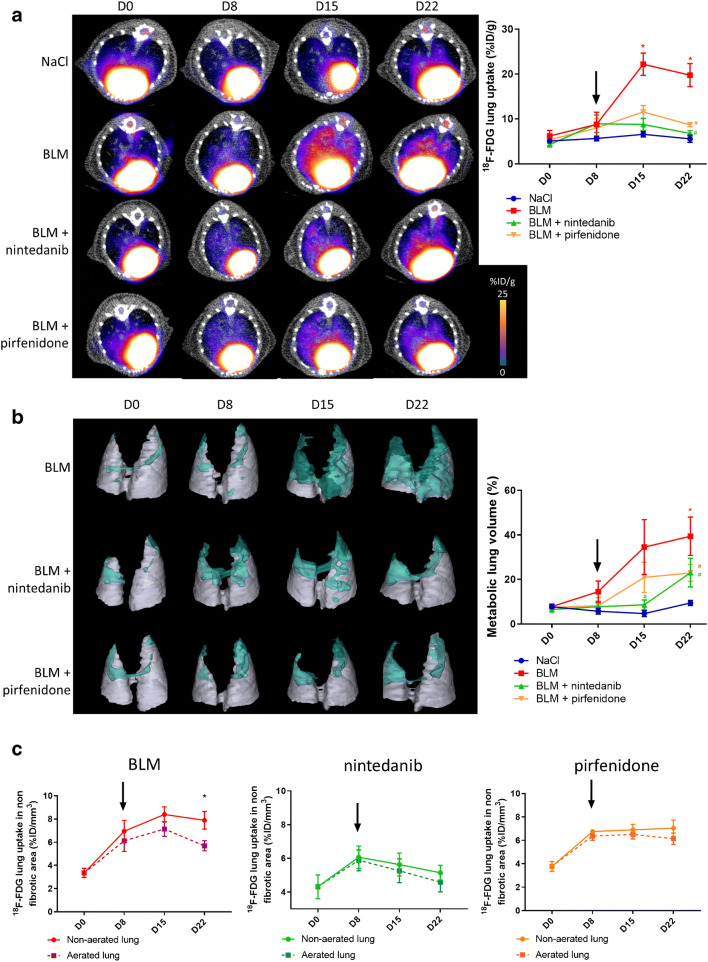Fig. 5.
[18F]FDG PET can detect advanced lung fibrosis and is suitable for anti-fibrotic therapies follow-up. a Representative [18F]FDG PET/CT images of NaCl- and BLM-receiving mice treated or not with nintedanib or pirfenidone at D0, D8, D15 and D22. Graph represents evolution of [18F]FDG lung uptake (%IG/g) at all time points. Results are presented as mean ± SEM, n = 4 for NaCl and n = 5 for other groups. Stars (*) are representative of statistical comparison between time points for each group and hashes (#) are representative of statistical comparison between the groups at each time points. *(#)p < 0.05. Black arrow represents the start of treatments. b Representative 3D reconstruction of lung 3DROI segmentation of PET images representative of metabolic lung volume (MLV) of BLM-receiving mice treated or not with nintedanib or pirfenidone at D0, D8, D15 and D22. Cyan represents areas with high [18F]FDG lung uptake (above threshold of MLVthreshold = (SUVmean)D0 + 2SD); grey represents areas with low [18F]FDG lung uptake (below the threshold). Graph represents the percentage of evolution of MLV. Results are presented as mean ± SEM, n = 4 for NaCl and n = 5 for other groups. Stars (*) are representative of statistical comparison between time points for each group and hashes (#) are representative of statistical comparison between the groups at each time points. *p < 0.05. Black arrow represents the start of treatments. c Graph represents the evolution of [18F]FDG lung uptake in %ID/g of BLM-receiving mice treated or not with nintedanib or pirfenidone at D0, D8, D15 and D22in aerated and non-aerated lung areas (segmented on CT images). Results are presented as mean ± SEM, n = 4 for NaCl and n = 5 for other groups, *p < 0.05. Black arrow represents the start of treatments

